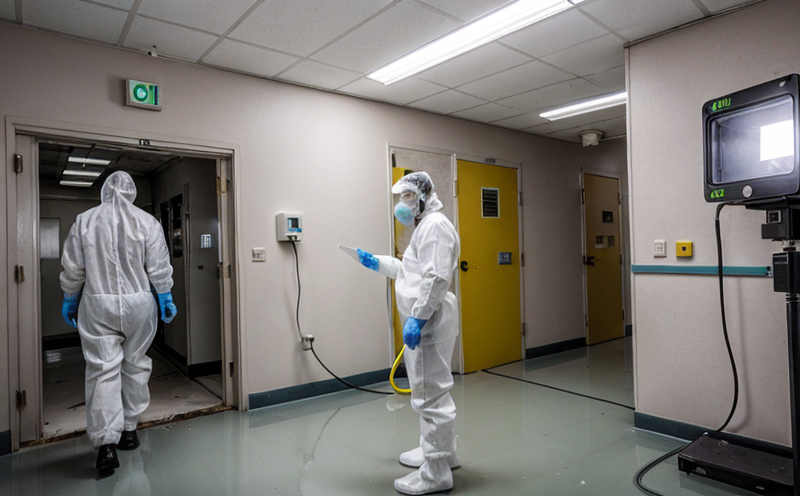Radiation exposure monitoring inspection
In the realm of Environmental Health and Safety (EHS) inspections, radiation exposure monitoring is a critical component that ensures the safety and well-being of personnel exposed to ionizing radiation. This service involves comprehensive assessments aimed at identifying sources of radiation, quantifying exposure levels, and ensuring compliance with international standards such as ISO 18657-2:2019 and EN 431:2012. The primary objective is not only to safeguard individuals from potential harm but also to prevent breaches in regulatory requirements.
Radiation can be present in various forms, including X-rays, gamma rays, beta particles, and alpha particles. Depending on the source and type of radiation, different monitoring methods are employed. For example, thermoluminescent dosimeters (TLDs) are used to measure cumulative absorbed dose over extended periods, while electronic personal dosimeters provide real-time readings for immediate decision-making. The choice of instrument depends on the specific environment and exposure conditions.
The process begins with a thorough site assessment to identify potential sources of radiation. This includes evaluating equipment, processes, and materials that may emit or expose personnel to harmful levels. Once identified, appropriate monitoring devices are deployed according to predefined protocols. Regular calibration and validation ensure the accuracy and reliability of these instruments.
Compliance with regulatory standards is paramount in this field. Compliance officers responsible for EHS must adhere to international guidelines such as those provided by the International Atomic Energy Agency (IAEA) and the US Nuclear Regulatory Commission (NRC). These standards outline acceptable exposure limits, permissible dose rates, and necessary precautions to protect workers.
Understanding the risks associated with radiation is essential. Overexposure can lead to various health issues ranging from skin irritation to severe organ damage or cancer. It is therefore crucial to implement effective monitoring practices that minimize unnecessary exposure while ensuring productivity. By adhering to best practices in radiation exposure monitoring, organizations demonstrate their commitment to employee welfare and regulatory adherence.
The impact of accurate radiation exposure monitoring extends beyond mere compliance; it contributes significantly to organizational safety culture. Quality managers play a key role in integrating these practices into broader health and safety strategies. Through continuous education and training programs, they ensure that all personnel are aware of the importance of safe handling procedures and the significance of regular monitoring.
Real-world applications underscore the necessity of this service. For instance, in nuclear power plants or medical facilities where radiation therapy is administered, precise monitoring is vital to prevent accidents and maintain optimal operational standards. By leveraging advanced technology and stringent protocols, these industries can achieve both safety and efficiency.
Customer Impact and Satisfaction
The implementation of a robust radiation exposure monitoring inspection significantly impacts customer satisfaction by ensuring a safer working environment. Quality managers, compliance officers, R&D engineers, and procurement teams benefit from reduced risks associated with ionizing radiation. This leads to higher productivity as personnel are less likely to be absent due to health issues or required retraining.
Moreover, adherence to international standards enhances the reputation of organizations, making them more attractive to clients and partners who value safety and compliance. The peace of mind provided by knowing that rigorous monitoring practices are in place fosters trust between customers and service providers.
In summary, a radiation exposure monitoring inspection not only protects personnel but also contributes to overall business success by mitigating risks and upholding high standards of quality and safety.
Environmental and Sustainability Contributions
The practice of radiation exposure monitoring plays a crucial role in environmental protection. By ensuring that all personnel are exposed to safe levels of radiation, this service helps prevent contamination incidents that could harm ecosystems and wildlife. Continuous monitoring also supports sustainable practices by minimizing waste generation through the prevention of accidental releases or spills.
In addition, adherence to international standards promotes transparency and accountability within organizations. This fosters a culture of sustainability where all stakeholders are committed to preserving natural resources and reducing environmental impact.
Overall, radiation exposure monitoring contributes positively to both immediate safety concerns and long-term environmental sustainability efforts. It serves as a cornerstone in building trust and ensuring that all operations align with global best practices.
Why Choose This Test
- Comprehensive assessment of radiation sources and exposure levels
- Ensures compliance with international standards such as ISO 18657-2:2019 and EN 431:2012
- Reduces the risk of overexposure to harmful levels of radiation
- Promotes a safer work environment for all personnel involved
- Aids in meeting regulatory requirements and preventing potential fines or penalties
- Supports continuous improvement in safety protocols through regular monitoring and evaluation
- Enhances organizational reputation by demonstrating commitment to employee welfare and regulatory compliance
- Fosters a culture of safety within the organization, encouraging proactive measures against radiation risks





